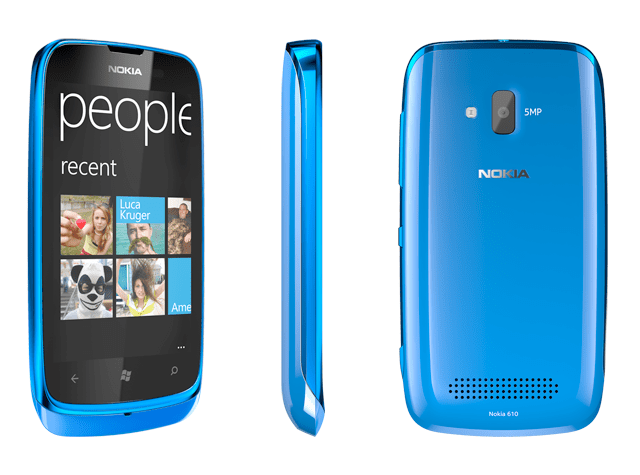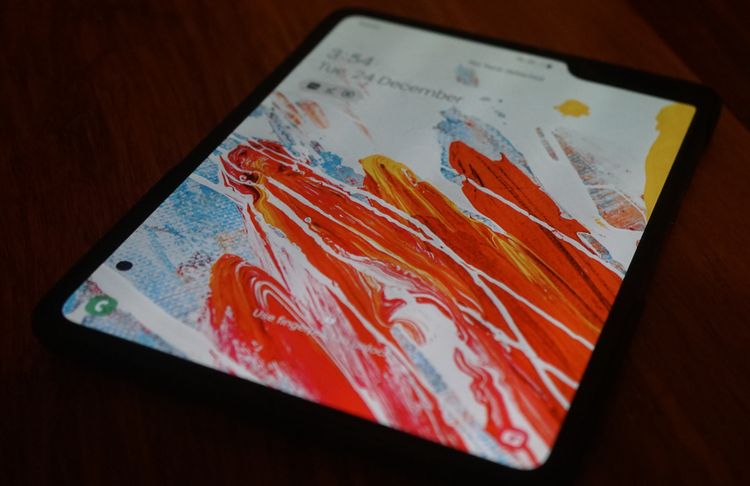Trinest Talks: Nokia Lumia 610 Review

Originally posted on Windows Phone Down Under.
I picked up the Lumia 610 because I needed a cheap Windows Phone 7 device which would update my broken Mozart and old BenQ E72. As Windows Phone 8 is around the corner I was looking for a device under $200. As well as a device which was comparable with generation one Windows Phone 7 devices which can meet the requirements I use the device for.
I would like to point out before I proceed that this device is a grey import. However the only difference to my experience is regional applications which the device contained. Which I have deleted, so will not be mentioned in this review. Another main different will be the availability of colours, my device is a Cyan 610, which may or may not be available by your carrier or supplier in Australia.
In the box you will find the device, charger and ear bud headphones. The package is well made and continues with the simular designs of the product boxes Nokia has been using recently and for the Lumia family in general.
What most people know the Lumia 610 as, is the black sheep of the Windows Phone family. The device which is one of the only devices which contains the lower specification range which Microsoft introduced to the platform with the 7.5 update. Many people will overlook the 610 and consider the Lumia 800 or 900 or even a device not even part of the Windows Phone family.
While the Lumia 610 wasn’t my first choice. It was a choice I was willing to make. Before and after my purchase I did countless of research of the device to make sure it is the right device for me. One of the main swaying points for me was the Lumia 610 was one of the only Nokia devices which covered all the wireless bands. With the 710 and above having a separate Telstra (NextG) device, which the device also containing a considerable price jump from the non Telstra band device. So because of this the 610 was the logical choice.
Drastically reduced in this phone specification wise is the devices ram. Instead of 512MB like other Windows Phone devices. The Lumia 610 is the first which drops it down to 256MB of ram. Its processor is also 800MHz instead of the 1.4 GHz CPU which other generation 2 devices contain. This combination makes this phone underpowered, it is impossible to cover up that fact. However the key question is does this lower spec range drastically alter the experience to a point it is unusable and in result pointless to consider this spec range as a key contender in the mobile phone market.
Firstly I want to talk about two other things in the phone which are also not as powerful or good. The screen is one of those features which is less fancy compared to other devices. As a consumer visually I cannot see much of a difference with the screen when it sits next to my Mozart device. With the screen in the 610 been slightly duller but not by much. This is one of the devices points which I thought would be considerably different because of the comments around the device. I was surprised to see that it wasn’t as bad as previously thought. With the screen been comparable with generation one devices. I feel that while the models in the Lumia range higher than the 610 all have better screens, the 610 has a comparable screen which doesn’t hinder the experience. If I was to find a negative is that it is a bit dull in the sun.
Another feature which isn’t as good as other devices in the Lumia range is the camera. The camera in the 610 is only a 5 megapixel camera. It doesn’t have anything fancy attached to it like the Carl Zeiss which the 800 and 900 have. It is as basic as the camera can be hardware wise, and also comes with a LED flash. This device also doesn’t capture 720p video, and can only do VGA. Which does look a bit dated these days. Your videos will be blurry in motion, however when the lens focus the video does look acceptable despite the resolution and in return can pick up some sharp video. Pictures taken by the device are also surprisingly acceptable. You won’t win any photography contests, but the pictures produced I believe can be comparable with generation one Windows Phone 7 devices. Most of the time there will be considerable different between them however. They are not amazing, there are artefacts and general grain but on the same token they are not horrible.
The hardware itself of the Nokia Lumia 610 is well built despite the phone been in the cheap lower end section of the market. Nokia has designed the device in a range of colours, from cyan to magenta to black and finally white. The device is two toned, with the back of the device been a brighter candy version of the colour while the side is a darker version of the main colour in a glossy texture. The front of the device contains a black border around the screen which also is behind the capacitive buttons. The front face also contains the glossy and candy colours on the bottom of the device. Which in return gives the phone a nice colour composition.
Another key difference to note is that the back of the device on the cyan and white models is glossy. However on the black and magenta models the back is rubberised.
The top side of the phone contains the 3.5mm head jack for ear buds as well as the micro USB port. While the right side is the only side of the phone with any buttons. It contains the volume, lock and camera buttons. These buttons are relatively responsive and the software is quick to act to the action the button commands.
In general software slow down isn’t noticeable. Occasionally the device might take a few seconds extra here and there to load content or an application. However for the most part the UI is as smooth as it is on higher spec’d devices. With the only interesting slow down issue been when the device is charging it seems to be less responsive as it should be.
The Nokia Lumia 610 comes with applications from Nokia such as Nokia Drive and Maps. These applications are built in. However the Marketplace which is Nokia branded, also contains a section for more Nokia maps. Which there is a considerably large selection in the database which Nokia provides. With one of the key extra programs for the 610 by Nokia been Nokia Music.
Nokia Drive has a considerable amount of maps and voices for the user to select. During first setup the user can download their regions map as well as select their preferred voice option. During initial setup it will then download these options once selected. The Australian maps are 199MB while the voice (English (UK) Female) is 4.1MB. The Lumia 610 only contains 8GB of internal space (which is more like 6GB due to OS and installed application sizes) so it is recommended that you make sure you have the allocated space required.
Once you have Nokia Drive, you will find the map is pretty straight forward. The application is fairly basic from a driving GPS standpoint, however will give you all the information you need ranging from how fast you are going to been able to set the destination you wish to go to. You can also change the map type from 2D to 3D. Performance wise the application can be slow at times. However once everything has loaded is relatively responsive. It is probably better to have 2D maps instead of using the 3D map setting. There are also some extended settings which give the application a bit more depth.
In addition to Bing Maps (the default map program) the Lumia 610 contains Nokia Maps. Once again the application is relativity simple however it does contain a few extra settings which enhance the experience. The application feels smooth on the Lumia 610.
Finally there is Nokia Music. Which is the music application by Nokia which is very similar to the Zune application. Nokia Music contains mix radio, which is an option which allows users to listen to free music provided by Nokia. Mix radio has a range of channels which the user can pick from to listen to their favourite tracks. It also contains a feature which the user can download the music and make the radio channel offline. You can also make your own play list radio station by searching for tracks. As for the general music player in the application it is relatively simular to Zune. However some UI elements are slightly different and there are backgrounds. So to test the applications snappiness I listened to the band Totally Enormous Extinct Dinosaurs who did Garden a song which might make some fans of the Lumia ad range perk up as they listen to it. So my verdict is like all things when the application has the stuff in its head rolling around it will flow well. However loading sections of the application do take their time compared to other Nokia applications.
Finally the device has a few applications which do not work on it because of the limited ram. Primary stuff like Angry Birds will not work on the device. However things like Max the Magic Marker will. In fact the majority of Microsoft published applications and games will work on the Lumia 610 fine. However third party published applications are a lucky dip if they will work on your device (game wise).
Overall:
Overall I feel that the Nokia Lumia 610 is a great entry level device. It might not be as powerful as other phones but its presence doesn’t hinder the experience of Windows Phone, but only expands it. However with Windows Phone 8 around the corner it could be wise to wait to see what the offerings are from Nokia in the coming months. If you can’t wait for one reason or another, then this is phone is acceptable.
A Pro and Con list for this device would only hinder the expectations for the user. I will say however if this device is going to be your child’s phone, or you need it temporary or you can’t afford the other Lumia devices. Then this is the phone for you. If you can afford the other Lumia devices or you are waiting for Windows Phone 8 then this isn’t the device for you. Buying this device in that case would only hinder your expectations of Windows Phone and you might not give the ecosystem a proper chance.




